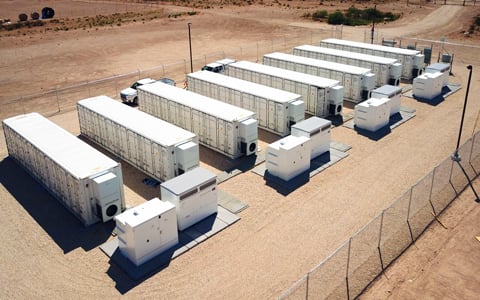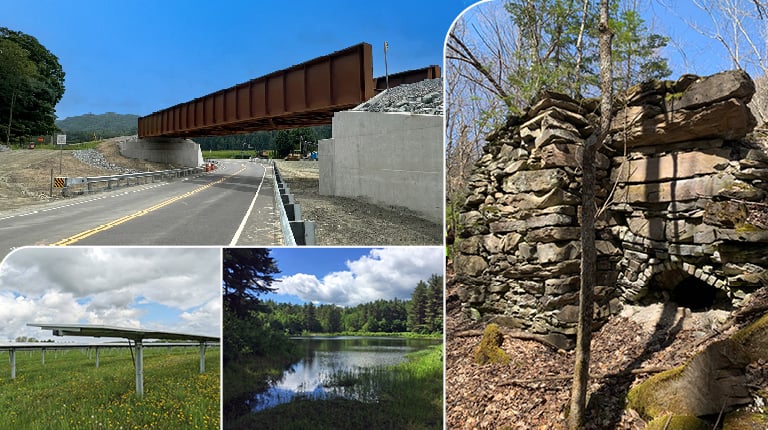
With the first two fully permitted battery energy storage system (BESS) projects in Connecticut, VHB keeps pushing the leading edge of energy innovation in New England. The 5.02-megawatt (MW) BESS in Windsor Locks will deliver electricity to power approximately 1,000 homes for four hours in the event of a power outage. Headed by accomplished battery energy storage company Key Capture Energy, LLC (KCE), the KCE CT9 Windsor Locks BESS project will help Connecticut meet its goal of deploying 1,000 MW of energy storage by 2030.
BESS benefit utilities and the communities they serve by making the electric grid more resilient and dependable as severe weather events caused by climate change become more frequent. The lithium-ion batteries in a BESS installation charge either from a renewable energy source like a solar facility, or, as in the case of KCE CT9, directly from the electric grid. Smart software integrated in the system monitors electricity supply and quickly discharges the batteries’ stored electricity to the grid.
Energy storage also pays long-term environmental dividends. As states like Connecticut look to decarbonize or “green” their grids, BESS presents an affordable, future-focused alternative to costly infrastructure upgrades. Coupling BESS with variable renewable energy (VRE) sources like solar and wind can optimize these important but fluctuating resources’ contributions to the grid. Batteries can charge at times when there is surplus energy supply, for instance, electricity generated by midday sunshine, and transmit that power in high-demand evening periods when solar generation is unavailable. This transmission flexibility curbs reliance on fossil fuel power plants.
For the KCE CT9 BESS project in Windsor Locks, a town in the Greater Hartford region, KCE carefully selected a site that would minimize environmental impacts—the project entirely fits onto a former gravel parking lot. The VHB team has delivered engineering site plan design, environmental support, and a stormwater management report as well as support with permitting and petition filings.
The Connecticut Siting Council (CSC) approved KCE’s project petition in November. First Selectman Paul Harrington, the Town’s chief executive officer and a self-professed “avid supporter of renewable energy,” expressed excitement in a letter of support about how this project “… will support continued development of renewable generation as well as bring reliability benefits to the electrical system.”
The 5-MW KCE CT8 East Hampton BESS project that KCE has partnered with VHB to deliver was also approved by the CSC in November. VHB is supporting KCE on two other Connecticut BESS projects.
Learn more about how VHB can help advance your grid decarbonization goals or connect with Steve Kochis.


